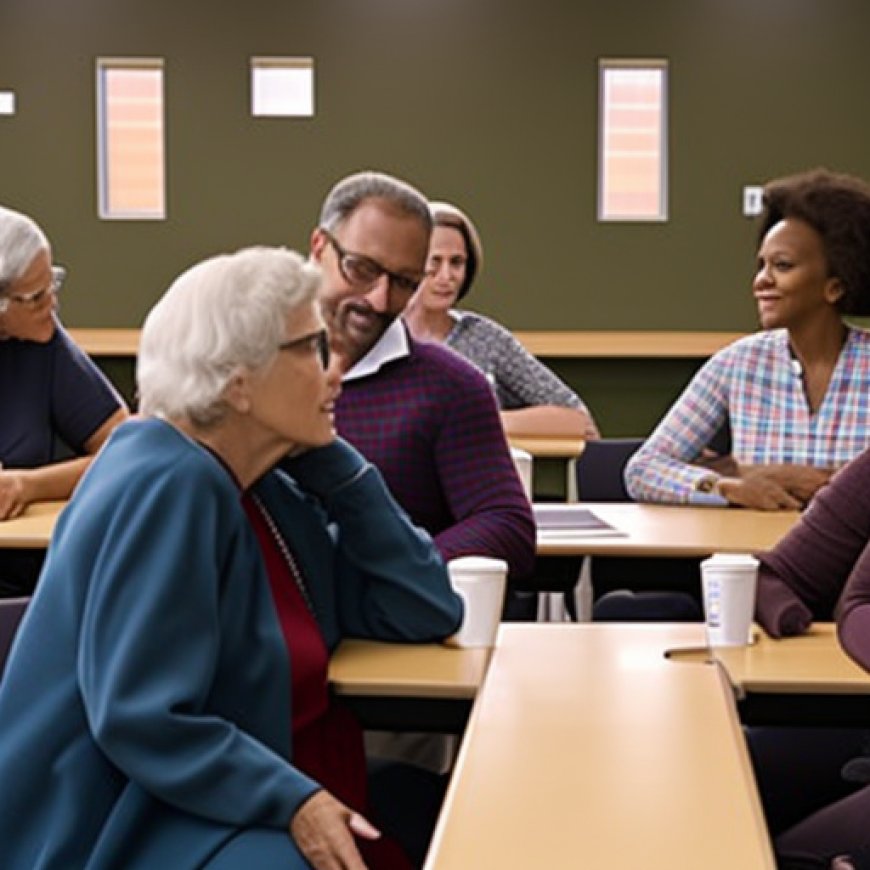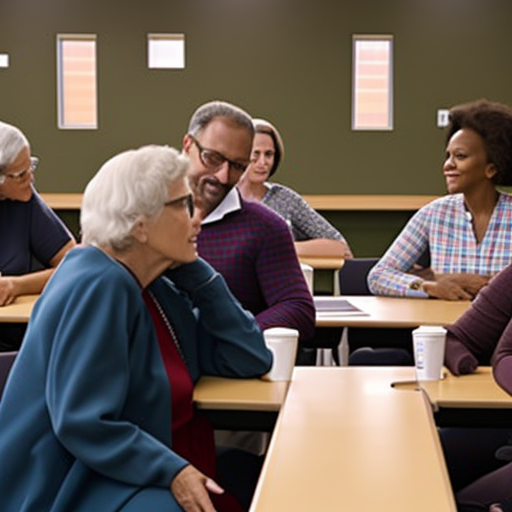Adult Literacy Class At Center 4Life Learning Starting This Fall
Adult Literacy Class At Center 4Life Learning Starting This Fall Osprey Observer


If you know an adult who grew up in the United States, never learned to read or write and would like to do so, help them get in touch with the Center 4Life Learning. A free ‘Beginning Reading for Adults’ class will be offered beginning in October. Registration is now open.

The Center 4Life Learning
The Center 4Life Learning, located at the United Methodist Church of Sun City Center, is a fun, nonaccredited adult education outreach program that serves the entire community. One does not need to be a member of the church to participate.
‘Beginning Reading for Adults’ Class
The Center 4Life Learning is offering a ‘Beginning Reading for Adults’ class this fall. The class will be offered free of charge. It is set to begin in October and will run through March 2024. This is a beginner reading class, where students literally learn to read. The goal of the class is to get the students to a point where they would be able to read to learn new things independently with minimal tutoring.
Ideal Student
The ideal student is one who grew up in the United States but never learned to read or write. Moreover, they have never learned phonics or do not have confidence in the knowledge they have. As they have grown up in the United States, they will share a basic foundation of words to use for lessons.
Instructor
Jan Caruthers, Ed.S. will be the instructor. She has a master’s degree in English and an educational specialist degree in reading. She was an elementary teacher for over 25 years with an emphasis on reading and writing with children ages 5-10. She also taught remedial reading at Hillsborough Community College to adults who had not attained a 10th grade reading level on the placement test.
Class Schedule
The class will run two days per week for two hours per class.
Approach to Teaching
According to Sue Holter, manager of Center 4Life Learning, “This will be a very small, uplifting class. The instructor will start at their point of need and build on it. Some adults are not confident in their ability to read new words because they either never learned all the letters and letter-combination sounds or have forgotten them. If so, we will use what they know to sound out words. They will also learn high frequency words that appear in all books. When they combine these high-frequency words, the beginning sounds of unknown words and their general life knowledge, they will be able to read.”
Importance of Adult Literacy Classes
According to the National Center for Education Statistics and the U.S. Department of Education, 23.4 percent of Hillsborough County residents perform at the lowest literacy level. As such, there is a need for adult literacy classes in Hillsborough County.
Contact Information
For more information, please call the Center 4Life Learning at 813-634-8607 or visit www.sccumc.com/4lifelearning.
SDGs, Targets, and Indicators
| SDGs | Targets | Indicators |
|---|---|---|
| SDG 4: Quality Education | 4.6 – By 2030, ensure that all youth and a substantial proportion of adults, both men and women, achieve literacy and numeracy. | Indicator not mentioned in the article. |
| SDG 4: Quality Education | 4.1 – By 2030, ensure that all girls and boys complete free, equitable, and quality primary and secondary education leading to relevant and effective learning outcomes. | Indicator not mentioned in the article. |
| SDG 4: Quality Education | 4.3 – By 2030, ensure equal access for all women and men to affordable and quality technical, vocational, and tertiary education, including university. | Indicator not mentioned in the article. |
| SDG 4: Quality Education | 4.4 – By 2030, substantially increase the number of youth and adults who have relevant skills, including technical and vocational skills, for employment, decent jobs, and entrepreneurship. | Indicator not mentioned in the article. |
| SDG 4: Quality Education | 4.5 – By 2030, eliminate gender disparities in education and ensure equal access to all levels of education and vocational training for the vulnerable, including persons with disabilities, indigenous peoples, and children in vulnerable situations. | Indicator not mentioned in the article. |
| SDG 4: Quality Education | 4.7 – By 2030, ensure that all learners acquire the knowledge and skills needed to promote sustainable development, including, among others, through education for sustainable development and sustainable lifestyles, human rights, gender equality, promotion of a culture of peace and non-violence, global citizenship, and appreciation of cultural diversity and of culture’s contribution to sustainable development. | Indicator not mentioned in the article. |
| SDG 1: No Poverty | 1.4 – By 2030, ensure that all men and women, in particular the poor and the vulnerable, have equal rights to economic resources, as well as access to basic services, ownership, and control over land and other forms of property, inheritance, natural resources, appropriate new technology, and financial services, including microfinance. | Indicator not mentioned in the article. |
| SDG 8: Decent Work and Economic Growth | 8.6 – By 2020, substantially reduce the proportion of youth not in employment, education or training. | Indicator not mentioned in the article. |
1. Which SDGs are addressed or connected to the issues highlighted in the article?
- SDG 4: Quality Education
- SDG 1: No Poverty
- SDG 8: Decent Work and Economic Growth
2. What specific targets under those SDGs can be identified based on the article’s content?
- SDG 4: Quality Education – Target 4.6
- SDG 1: No Poverty – Target 1.4
- SDG 8: Decent Work and Economic Growth – Target 8.6
3. Are there any indicators mentioned or implied in the article that can be used to measure progress towards the identified targets?
No, the article does not mention or imply any specific indicators that can be used to measure progress towards the identified targets.
4. SDGs, Targets, and Indicators
| SDGs | Targets | Indicators |
|---|---|---|
| SDG 4: Quality Education | 4.6 – By 2030, ensure that all youth and a substantial proportion of adults, both men and women, achieve literacy and numeracy. | Indicator not mentioned in the article. |
| SDG 1: No Poverty | 1.4 – By 2030, ensure that all men and women, in particular the poor and the vulnerable, have equal rights to economic resources, as well as access to basic services, ownership, and control over land and other forms of property, inheritance, natural resources, appropriate new technology, and financial services, including microfinance. | Indicator not mentioned in the article. |
| SDG 8: Decent Work and Economic Growth | 8.6 – By 2020, substantially reduce the proportion of youth not in employment, education or training. | Indicator not mentioned in the article. |
Behold! This splendid article springs forth from the wellspring of knowledge, shaped by a wondrous proprietary AI technology that delved into a vast ocean of data, illuminating the path towards the Sustainable Development Goals. Remember that all rights are reserved by SDG Investors LLC, empowering us to champion progress together.
Source: ospreyobserver.com

Join us, as fellow seekers of change, on a transformative journey at https://sdgtalks.ai/welcome, where you can become a member and actively contribute to shaping a brighter future.







